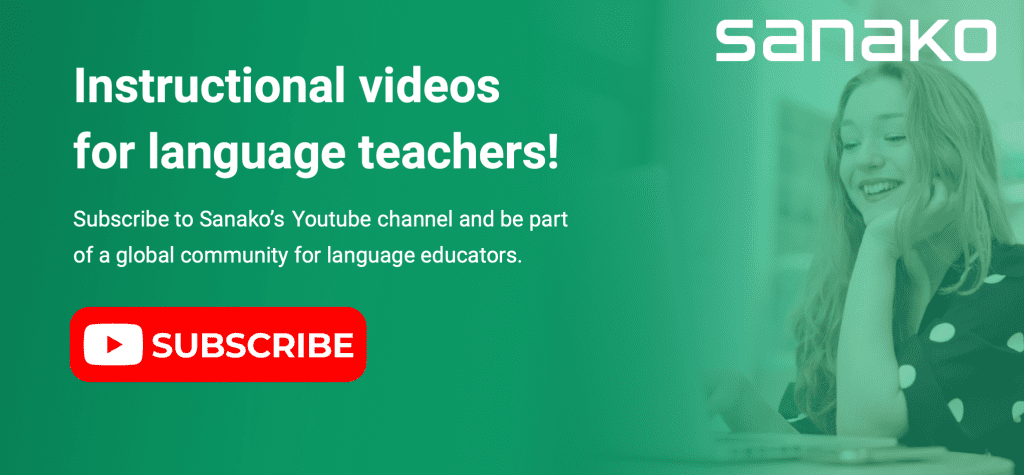In this blog post, we’ll introduce a language teaching method known as the text-based language teaching methodology. What is it? How does it work? What are its advantages?
What is a text-based approach to language teaching?
A text-based approach entails:
- Linking spoken and written texts to the cultural context of their use.
- Designing units of work that focus on developing skills in relation to whole texts.
- Providing students with guided practice as they develop language skills for meaningful communication through whole texts.
This methodology can be traced back to the 1970s. The objective of this approach is to make students acquainted with several texts which have a different context. The result will be the following: students will “produce and understand oral and written discourse in various natural or stimulated communicative settings in which they participate with a specific and explicit intention” (Mumba and Mkandawire, 2019, n.p.).
According to this teaching approach, the ability to understand different types of text helps to strengthen overall communicative skills in a second language.
How does a text-based language teaching strategy work?
“The Text-based Integrated Approach means that a series of lessons probably one or two weeks’ work will comprise a unit which centre around a written text. This will have to be chosen carefully by the teacher for its suitability in terms of interest, level of difficulty, and appropriateness to the learners” (Mumba and Mkandawire, 2019, n.p.).
A language, after all, does incorporate different texts. For instance, rather than just teaching isolated words such as teeth, we can make up a story about how important it is to brush our teeth, at least twice a day in order to avoid visits to the dentist. It appears from different studies that students, at any age, learn more effectively when grammar and vocabulary are taught altogether. And, when the teaching material makes students enthusiastic. Consequently, it is recommended to choose texts which will trigger interest. For instance, young children may be interested in animals and cartoons whereas older ones will find topics such as movies, music, sports, or even politics more appealing.
We can divide the language learning activities under the text-based approach into two different categories: Working on the text and working from the text.
Working on the text includes exercises that test the student’s understanding of the text. Among them, there are exercises like gap-filling (or fill-in-the-blanks), writing summary, linking actions, paraphrasing, and sequencing events for example.
Among working from the text exercises, there are debating the idea presented in the text, finding arguments for and against the topic or thesis presented by the text, developing a conversation between student groups using the text’s topic and vocabulary. Working from the text activities test the student’s ability to decode at a deeper level the message of the text and to use the information learned in a communicative context. Such activities allow for training both the student’s reading and speaking skills.
What are the main advantages of the text-based language teaching approach?
Lessons can integrate debates, roles plays, drama, or any sort of competition if preparation is given. This method implies that “teaching should focus on all the four language skills (speaking, reading, writing and listening). All activities are designed with reference to a particular text” (Mumba and Mkandawire, 2019, n.p.). This particular method seems to increase memorization and overall learning. As Study.com points out students can understand the meaning of new words by themselves by reading them in context and can also quickly acquire new vocabulary that evolves around that one topic.
If you’re a language teacher who’s looking for inspiration to design and explore new learning paths, then do check out Sanako’s Youtube Channel for instructional videos for language educators. Subscribe now and be part of our global community for language educators!
References used in this article:
Mumba, C. and Mkandawire, S. (2019) ‘The Text-based Integrated Approach to Language Teaching: Its Meaning and Classroom Application’, Multidisciplinary Journal of Language and Social Sciences Education, 2, pp. 123-143.
Sanata Dharma University (n.p.) Approaches, methods and techniques in language teaching. Available at: https://methodsinelt.wordpress.com/communicative-language-teaching-clt/b-the-teaching-implementation-brances-of-clt/b-the-teaching-implementation/text-based-instruction-genre-based-approach/?fbclid=IwAR0uykShB9hRo987AT6P6zE1WKwjXNmz7-wHGuybFM5tMw3FvlDeVrGo9R4 (Accessed: 25 November 2020).
Study.com (n.p.) Text-based instructional strategies. Available at: https://study.com/academy/lesson/text-based-instructional-strategies.html (Accessed: 26 November 2020).

